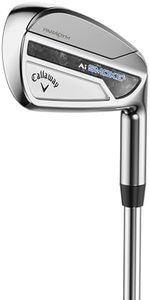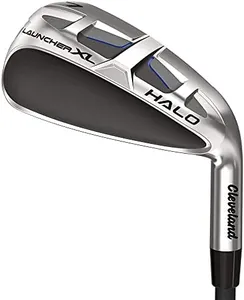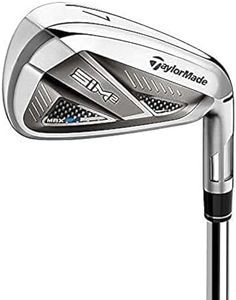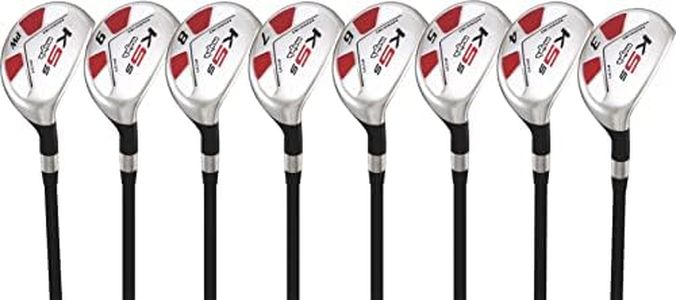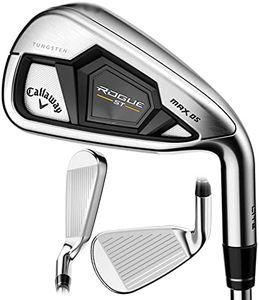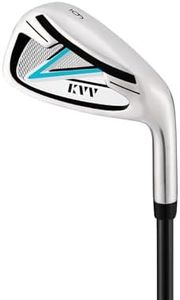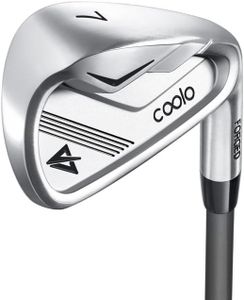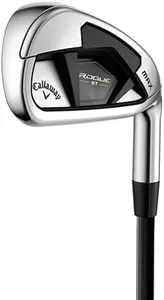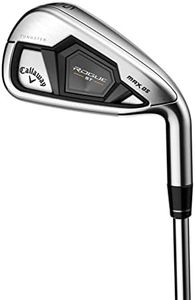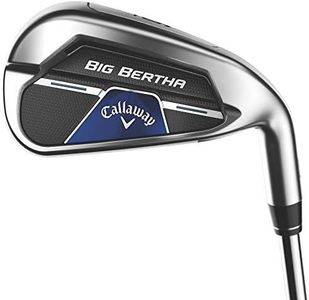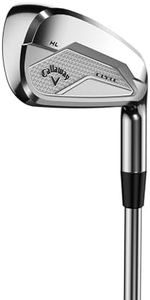We Use CookiesWe use cookies to enhance the security, performance,
functionality and for analytical and promotional activities. By continuing to browse this site you
are agreeing to our privacy policy
10 Best Golf Irons For Seniors
From leading brands and best sellers available on the web.Buying Guide for the Best Golf Irons For Seniors
Choosing the right golf irons is especially important for seniors because the right clubs can help maintain or even improve enjoyment, comfort, and performance on the course. As you get older, changes in strength, flexibility, and swing speed can affect your game, so irons designed with seniors in mind can provide extra help. Look for golf irons that make it easier to hit longer, straighter, and higher shots, even if your swing speed isn’t what it used to be. Understanding the key features and how they fit your needs will help ensure that you pick irons that bring out the best in your game.Shaft MaterialThe shaft is the long part of the iron that connects the head to the grip, and it plays a big role in how the club feels and performs. Shafts are usually made from either steel or graphite. Steel shafts are heavier and offer more control, but they require more effort to swing. Graphite shafts are lighter and can help increase your swing speed, making them especially helpful for seniors who may have lost some strength or speed. If you're finding your clubs heavy or your shots aren’t traveling as far as they used to, graphite shafts can make swinging easier and improve both distance and comfort.
Shaft FlexShaft flex refers to how much the shaft bends during the swing. Common flex ratings include regular, stiff, and senior (sometimes called 'A' flex). Senior flex shafts are specifically made for players with slower swing speeds, as they bend more easily, which helps generate higher ball flight and distance without needing extra effort. If your swing speed has slowed or you notice it's harder to get the ball airborne, selecting irons with senior flex shafts can make your shots feel smoother and more effortless.
Clubhead DesignIron clubheads can vary in size and shape, with designs like cavity-back and muscle-back. Cavity-back irons have a hollowed-out area behind the face, which increases the size of the sweet spot and provides more forgiveness when you don't hit the ball perfectly. This is ideal for seniors who want to avoid losing too much distance or control on off-center hits. Muscle-back (or blade) irons are smaller and favored by advanced players for their precision, but they're less forgiving. Seniors generally benefit from cavity-back designs, which help maintain performance even as swings become less consistent.
Club WeightThe overall weight of the iron includes the head, shaft, and grip. Heavier clubs can be harder to swing, especially as you age. Lighter irons are easier to control and help with swing speed, making them a great choice for seniors looking for ease and comfort on the course. If you notice fatigue during a round or struggle to maintain your best swing late in the game, look for lighter irons to make the experience more enjoyable and effective.
Loft AngleThe loft angle is the angle of the clubface that affects how high and far the ball will travel. Irons with higher lofts help get the ball in the air more easily, which is useful for seniors who may not swing as fast as they once did. Consider irons with slightly increased lofts or 'game improvement' models designed for higher launch. This will help you achieve longer, higher shots with less effort and can make a big difference in both confidence and performance.
Grip SizeThe grip is where your hands meet the club, and its size can affect comfort and control. Standard grips work for many, but seniors often prefer slightly larger or softer grips to make holding the club easier, especially if arthritis or hand strength is an issue. Choosing the right grip size for your hand will reduce fatigue and increase comfort during play, making it easier to keep a steady, controlled swing.
